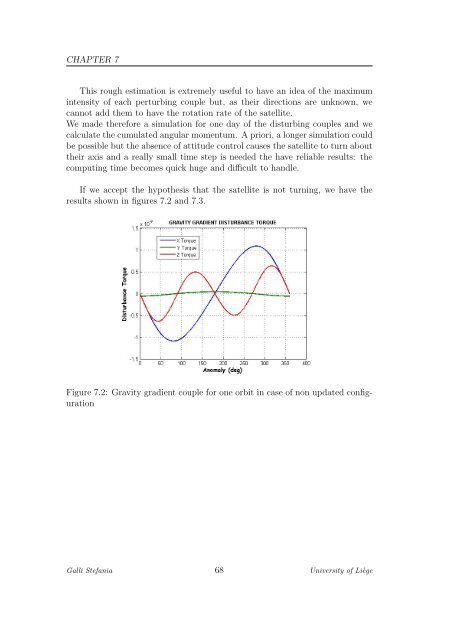Mission Design for the CubeSat OUFTI-1
Mission Design for the CubeSat OUFTI-1
Mission Design for the CubeSat OUFTI-1
Create successful ePaper yourself
Turn your PDF publications into a flip-book with our unique Google optimized e-Paper software.
CHAPTER 7This rough estimation is extremely useful to have an idea of <strong>the</strong> maximumintensity of each perturbing couple but, as <strong>the</strong>ir directions are unknown, wecannot add <strong>the</strong>m to have <strong>the</strong> rotation rate of <strong>the</strong> satellite.We made <strong>the</strong>re<strong>for</strong>e a simulation <strong>for</strong> one day of <strong>the</strong> disturbing couples and wecalculate <strong>the</strong> cumulated angular momentum. A priori, a longer simulation couldbe possible but <strong>the</strong> absence of attitude control causes <strong>the</strong> satellite to turn about<strong>the</strong>ir axis and a really small time step is needed <strong>the</strong> have reliable results: <strong>the</strong>computing time becomes quick huge and difficult to handle.If we accept <strong>the</strong> hypo<strong>the</strong>sis that <strong>the</strong> satellite is not turning, we have <strong>the</strong>results shown in figures 7.2 and 7.3.Figure 7.2: Gravity gradient couple <strong>for</strong> one orbit in case of non updated configurationGalli Stefania 68 University of Liège












